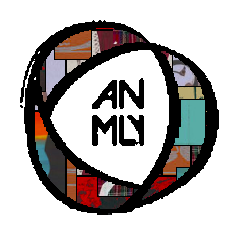Featured in this folio:
Introduction
Blessedly, the comics section has returned to Anomaly after a single-issue hiatus. Forgive us—me, rather—for its short absence. Personally, the break was a necessity, largely (but not solely) because I was working on my own comics. I’d given myself a deadline to complete a manuscript that has been in the works for nearly five years, and in the final effort, I was reminded, yet again, of how labor-intensive the comics-making process is.
Of course, every cartoonist has their own process, but regardless of how you go about it, the combination of writing, drawing, inking, and coloring is not only time consuming, but also physically exhausting. In the months preceding my deadline, my partner and kids became resigned to the sight of me hunkered over my drawing desk at every free moment, often late into the night. I had become boring, tired, sore, and irritable—and for what? Some meager scribbles? It’s not as if comics are a particularly revered medium. And yet, by some compulsion, I was making them.
This is, I imagine, a shared experience among cartoonists—this thought: Why do I do this? Why make comics?
And yet, for all the flack comics have taken over the years—flack that has shifted more recently to indifference—for those enveloped in the practice, there is something poetic, even sacred, in the paneled, paginated rhythms of the comics spread. And for those paying attention, it’s clear that the DNA of comics is steadily informing the multi-media logic of the digital age. It’s our memes, our readymade cache of emojis, our Twitter and Instagram feeds, not to mention the source material for the most lucrative stories in contemporary media.
What I’m getting at is this: whatever their larger cultural status, comics are important. And not only are comics important, but the comics in Anomaly are important. The comics we seek out and publish are those that are pushing the boundaries of the medium; comics that fiddle with the borderlines of cartooning, and the poetics of visual-verbal hybrids. This is the unsung avant-garde, the research and development arm of contemporary visual culture, and this issue is no different.
Further, the five amazing artists that comprise Anomaly 29’s comics section are, in addition to being brilliant comics-makers, kind, patient, and oh-so generous. I feel extremely grateful to present them here, as stalwart examples of what comics can do, and where comics are going: if you want to understand the future of our hyper-mediated, visual-verbal world, start here.
Nick Potter
August 2019
